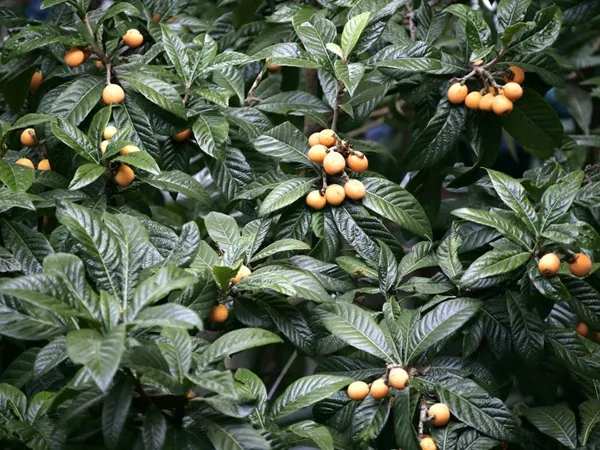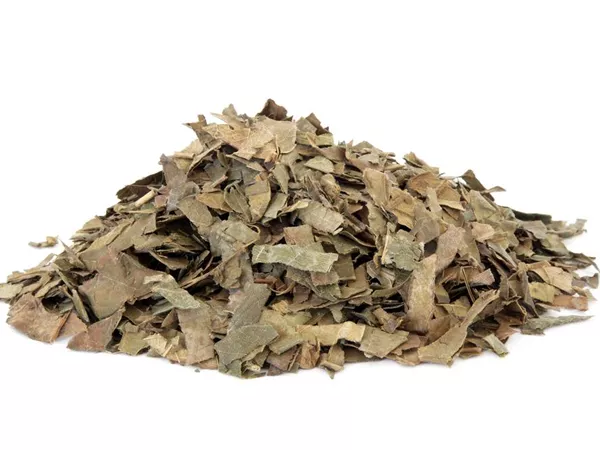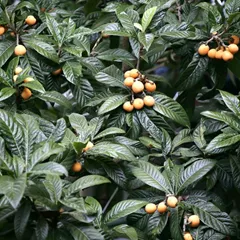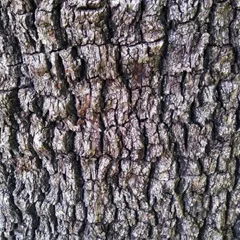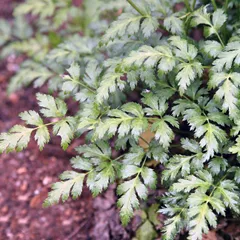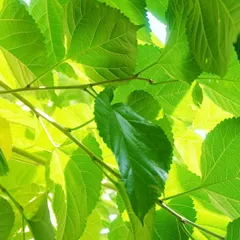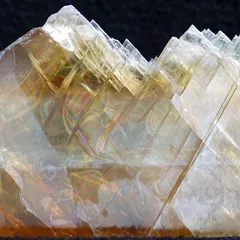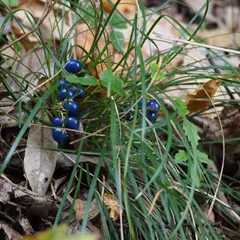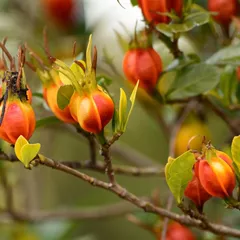Pi Pa Ye
Pi Pa Ye
English: Loquat leaves
Chinese: 枇杷叶
Parts used: Dried leaves
TCM category: Herbs that relieve coughing and wheezing
TCM nature: Cool
TCM taste(s): Bitter
Scientific name: Eriobotrya japonica
Other names: Japanese medlar, Japanese plum or Chinese plum
Use of Pi Pa Ye (loquat leaves ) in TCM
Please note that you should never self-prescribe TCM ingredients. A TCM ingredient is almost never eaten on its own but as part of a formula containing several ingredients that act together. Please consult a professional TCM practitioner, they will be best able to guide you.
Preparation: Collect the leaves and dry.
Dosage: 6-15 grams
Main actions according to TCM*: Expels hot phlegm in the Lungs and redirects rebellious Lung Qi. Cools stomach Heat and redirects rebellious Stomach Qi. Relieves cough and vomiting.
Primary conditions or symptoms for which Pi Pa Ye may be prescribed by TCM doctors*: Dyspnea Vomiting Fever Bronchitis Excessive thirst Coughing
Common TCM formulas in which Pi Pa Ye is used*
Pi Pa Qing Fei Yin
Source date: 1665 AD
Number of ingredients: 6 herbs
Formula key actions: Clears Lung Heat . Cools the Blood . Clears Dampness. Invigorates the Blood.
Conditions targeted*: AcneFacial acne and others
Pi Pa Ye is a king ingredient in Pi Pa Qing Fei Yin. Like the name indicates, it means it has more power than other ingredients in the formula.
In Pi Pa Qing Fei Yin, Pi Pa Ye transforms Phlegm, clears Lung Heat and descends Lung Qi. Together with Mulberry bark, Goldthread rhizomes , it treats cough with copious yellow Phlegm due to Lung Heat.
Qing Zao Jiu Fei Tang
Source date: 1658 AD
Number of ingredients: 9 herbs
Formula key actions: Clears dryness. Moistens the Lungs.
Conditions targeted*: InfluenzaAcute bronchitis and others
Pi Pa Ye is an assistant ingredient in Qing Zao Jiu Fei Tang. This means that it either serves to reinforces the effect of other ingredients or it moderates their toxicity.
In Qing Zao Jiu Fei Tang, Pi Pa Ye moistens the Lungs and also directs the Lung Qi to go downwards.
Xin Yi Qing Fei Yin
Source date: 1617
Number of ingredients: 10 herbs
Formula key actions: Spreads Lung Qi. Clears Heat. Unblocks the orifices (specifically the nose) .
Conditions targeted*: Nasal polypsSinusitis and others
Pi Pa Ye is an assistant ingredient in Xin Yi Qing Fei Yin. This means that it either serves to reinforces the effect of other ingredients or it moderates their toxicity.
In Xin Yi Qing Fei Yin, Pi Pa Ye clarifies and descends, thus directing the Lung Qi downward and enabling the it to spread.
Loquat leaf and Bugbane rhizome works together to regulates Qi flow in the Upper bodyso that the turbid Qi descends and the clear Qi rises.
Key TCM concepts behind Pi Pa Ye's properties
In Traditional Chinese Medicine (TCM), Pi Pa Ye belongs to the 'Herbs that relieve coughing and wheezing' category. In TCM Phlegm is a condition of Stagnation of Fluids which tends to start in the Spleen and then goes to the Lungs. If this overly accumulates it thickens and becomes pathological Phlegm. Phlegm, being a form of Stagnation, often starts as being Cool and transforms to Hot as the condition progresses. Herbs that relieve coughing and wheezing treat branch symptoms of this Stagnation and tend to have antitussive, expectorant, diuretic or laxative properties.
Furthermore Pi Pa Ye is Cool in nature. This means that Pi Pa Ye tends to help people who have too much 'Heat' in their body, although with less effect than a plant that would be Cold in nature. Balance between Yin and Yang is a key health concept in TCM. Those who have too much Heat in their body are said to either have a Yang Excess (because Yang is Hot in nature) or a Yin deficiency (Yin is Cold in Nature). Depending on your condition Pi Pa Ye can help restore a harmonious balance between Yin and Yang.
Pi Pa Ye also tastes Bitter. The so-called 'Five Phases' theory in Chinese Medicine states that the taste of TCM ingredients is a key determinant of their action in the body. Bitter ingredients like Pi Pa Ye tends to have a cleansing action on the body by clearing Heat, drying Dampness and promoting elimination via urination or bowel movements.
The tastes of ingredients in TCM also determine what Organs and Meridians they target. As such Pi Pa Ye is thought to target the Stomach and the Lung. In TCM the Stomach is responsible for receiving and ripening ingested food and fluids. It is also tasked with descending the digested elements downwards to the Small Intestine. In addition to performing respiration, the Lungs are thought in TCM to be a key part of the production chain for Qi and the Body Fluids that nourish the body.
Research on Pi Pa Ye
A study on rabbits has shown that Loquat leaves exhibit anti-inflammatory activity, have anti-viral properties and a significant hypoglycemic effect.1
Sources:
1. Nunziatina De Tommasi, Francesco De Simone, Cosimo Pizza, Naheed Mahmood, Patrick S. Moore, Cinzia Conti, Nicola Orsi, and Maria L. Stein (1992). Constituents of Eriobotrya japonica. A Study of Their Antiviral Properties. Journal of Natural Products 55 (8), 1067-1073. DOI: 10.1021/np50086a006

